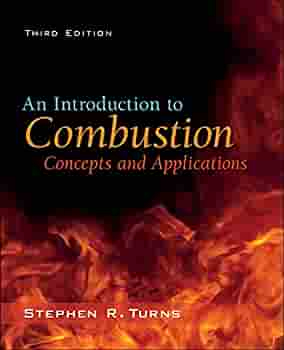Electrical Transformers Pdf
Electrical transformers pdf conceptually elaborates the functioning of electrical transformers. Transformers are an essential component of our modern electrical system.
With their ability to efficiently and safely transfer electrical energy from one circuit to another, they allow for the widespread distribution of electricity across large distances. Electrical transformers can be found in everything from power plants to household appliances, ensuring that the electricity we use every day is safe and efficient.
In this article, we will dive deeper into the world of electrical transformers, exploring their history, design principles, and practical applications.
Types Of Electrical Transformers
Electrical transformers are devices that transfer electrical energy from one circuit to another. There are several different types of electrical transformers, each of which is used for a different purpose. Power transformers are the most common type, as they are used to step up or step down the voltage of an electrical current.
Distribution transformers, on the other hand, are typically used to deliver electrical power to individual homes and businesses. Finally, instrument transformers are used to measure electrical currents or voltages in a circuit without having to directly connect to the source.
Regardless of the type of transformer, each one is designed to efficiently and safely transfer electrical energy in order to power a wide range of devices and systems.
Design And Working Principle Of Electrical Transformers
Transformers are essential electrical devices that support power transmission and distribution by changing high voltage electricity into a lower voltage, more appropriate for usage in homes and businesses. A transformer is made up of a magnetic core and two or more coils of wire wrapped around it.
The magnetic flux created by the primary coil induces a voltage in the secondary coil. The transformer’s core and windings can vary, depending on the transformer’s purpose, and the cooling system might also differ. Dry and liquid-filled transformers are the two most common types of cooling systems.
Understanding the fundamental construction and working principle of electrical transformers is critical for power distribution applications.
Electrical Transformer Testing And Standards
Electrical transformer testing is crucial for ensuring electrical safety. There are different types of transformer tests, including measurement of insulation resistance and winding resistance. Standards for transformer testing exist at the national and international level. Testing helps identify issues like leakages and faulty insulation, ensuring efficient performance.
It’s essential for reducing electrical hazards and increasing the lifespan of transformers. Standards ensure consistency of testing across different manufacturers and prevent sub-standard products. Testing is carried out during the manufacturing process and also periodically during a transformer’s lifespan. It’s important to ensure that testing is conducted by trained and qualified professionals.
Maintenance And Troubleshooting Of Electrical Transformers
Maintenance and troubleshooting of electrical transformers is crucial for avoiding costly downtime and ensuring optimal performance. Regular maintenance includes inspecting and cleaning components, replacing damaged parts and fluid, and testing the transformer’s insulation and grounding. Common problems that may arise include overheating, short circuits, and low output voltage.
Troubleshooting these issues may require testing with specialized tools, isolating faulty components, and replacing them as needed. Safety precautions during maintenance and troubleshooting include turning off power sources, using appropriate personal protective equipment, and following company policies and procedures. By following these guidelines, you can maintain your electrical transformers properly and ensure safe and efficient operation.
Benefits And Challenges Of Electrical Transformers Pdf
Pdfs have revolutionized the way documents are shared, including electrical transformer manuals. One of the main benefits of using pdfs for electrical transformers is their ability to preserve formatting and layout. This ensures that important details, such as diagrams, charts and tables, are displayed correctly.
However, there are also challenges and limitations of using pdfs. One of the biggest drawbacks is their inability to be easily edited. This can be particularly problematic if there are updates or changes to be made. Additionally, when compared with other file formats, such as word or html, pdfs can be slower to load and may require additional software to view.
Overall, while there are benefits to using pdfs for electrical transformers, there are also challenges that need to be considered.
Frequently Asked Questions Of Electrical Transformers Pdf
What Is An Electrical Transformer?
An electrical transformer is a device that transfers electrical energy from one circuit to another, usually by electromagnetic induction. It changes the voltage level of an alternating current (ac) power supply.
What Are The Types Of Electrical Transformers?
There are two main types of electrical transformers: step-up transformers that increase the voltage level and step-down transformers that lower the voltage level. Other types include isolation transformers, autotransformers, and resonant transformers.
How Does An Electrical Transformer Work?
An electrical transformer works on the principle of electromagnetic induction. It consists of two coils of wire that are magnetically coupled. When an alternating current flows in one coil, it creates a time-varying magnetic field that induces a voltage in the other coil.
What Are The Advantages Of Using Electrical Transformers?
Electrical transformers have several advantages, including increasing or decreasing voltage levels, reducing power dissipation, and isolating electrical circuits. They also improve the efficiency of power transmission and distribution.
How Are Electrical Transformers Tested?
Electrical transformers are tested for their insulation resistance, winding resistance, and turns ratio. Other tests include no-load loss, load loss, and temperature rise tests. Manufacturers test electrical transformers according to different standards and guidelines.
Conclusion
After all is said and done, it is clear that electrical transformers are an essential component of our everyday life. With the world rapidly transitioning to cleaner energy sources, transformers will continue to play a crucial role in the power generation and distribution process, resulting in a significant impact on economic and environmental sustainability.
We have observed how a small device like a transformer can save thousands of dollars and prevent equipment damage due to voltage fluctuations. The application of technological advancements in transformers has led to increased efficiency, reliability, and reduced environmental footprint.
Whether it’s about optimizing grid networks or supporting renewable energy, transformers form an indispensable part of the energy sector’s functioning. As we move towards a sustainable future, the role of electrical transformers will remain crucial, and their significance will only continue to grow with time.





